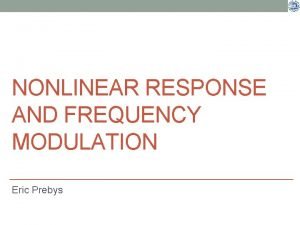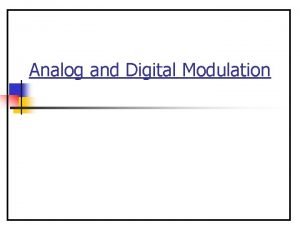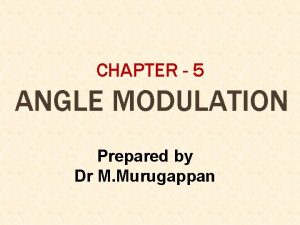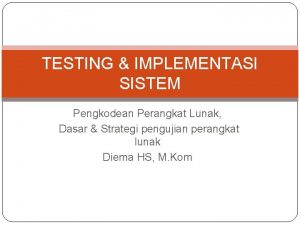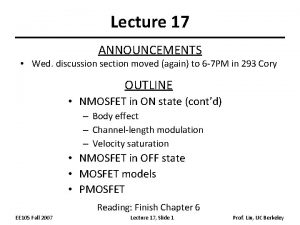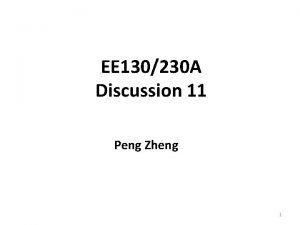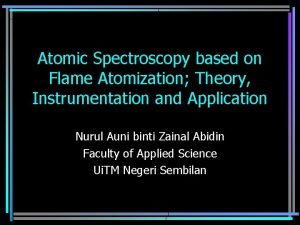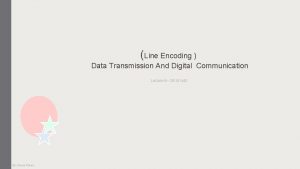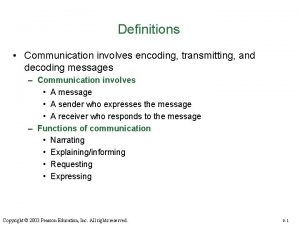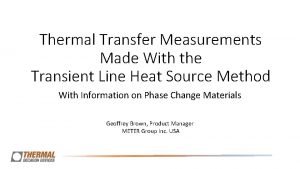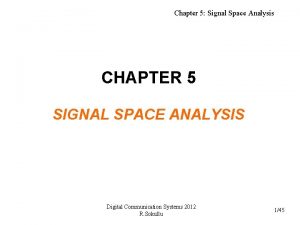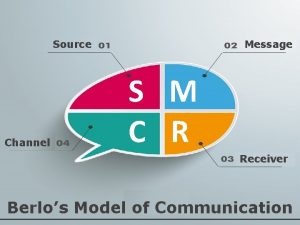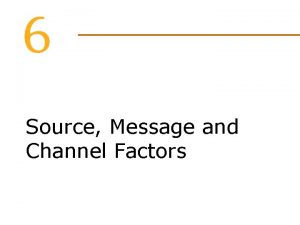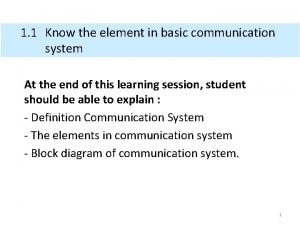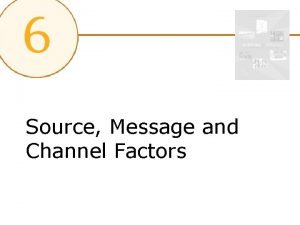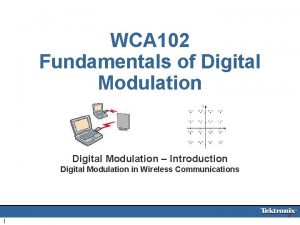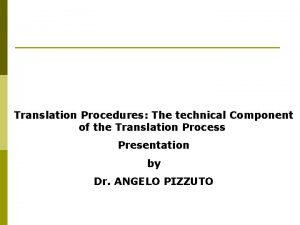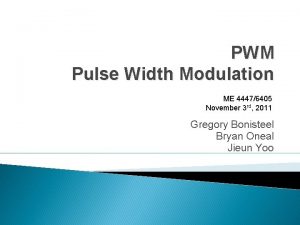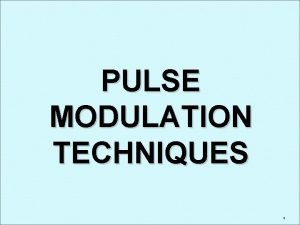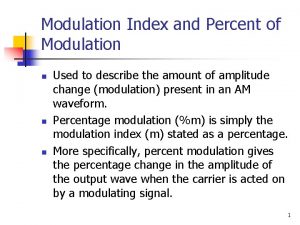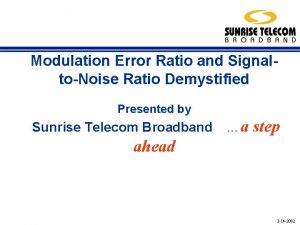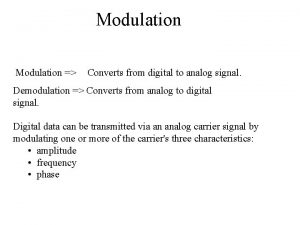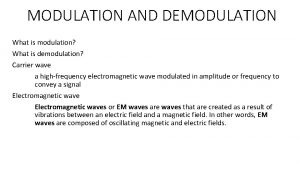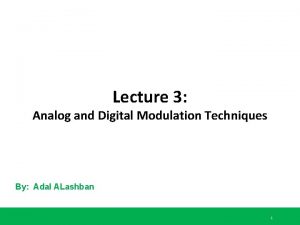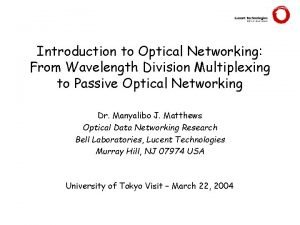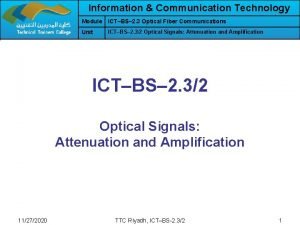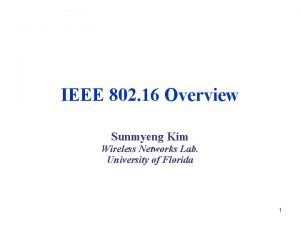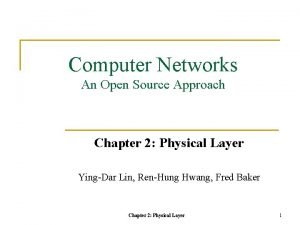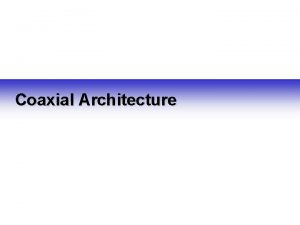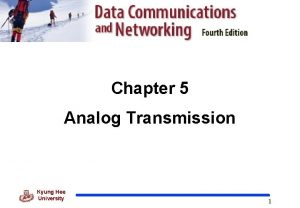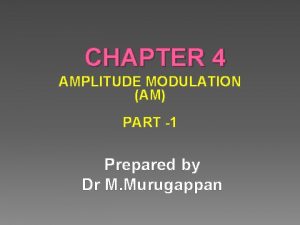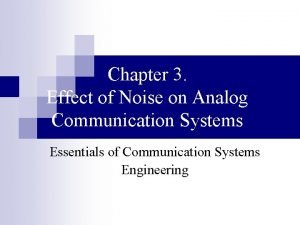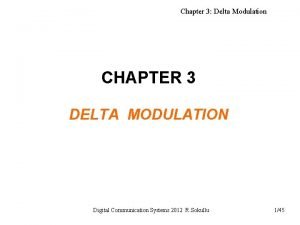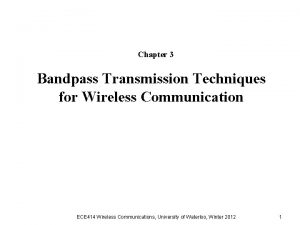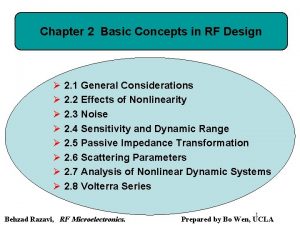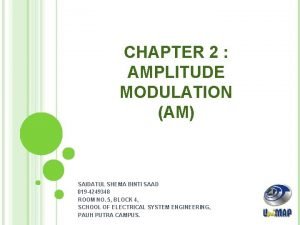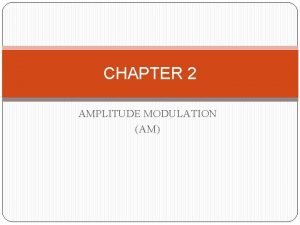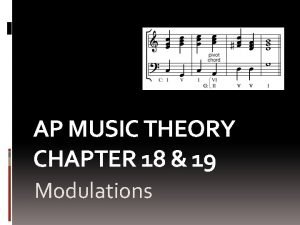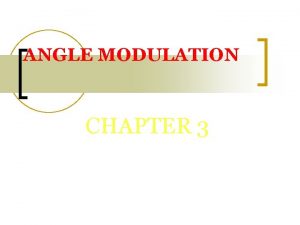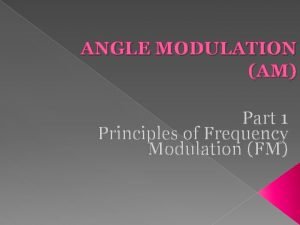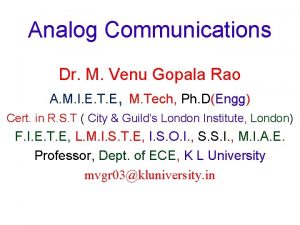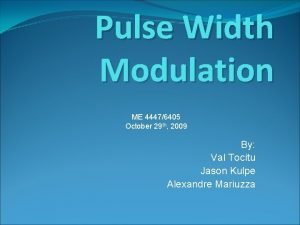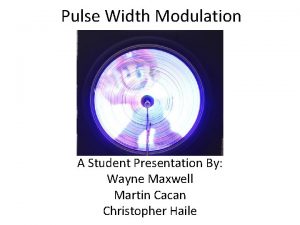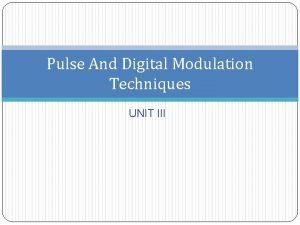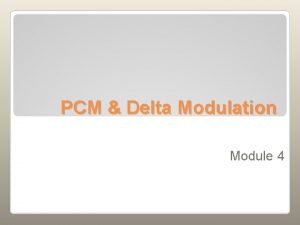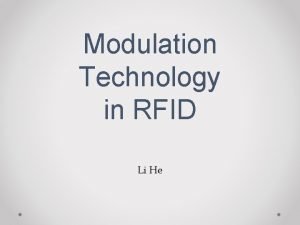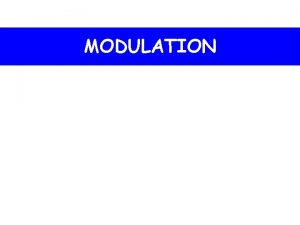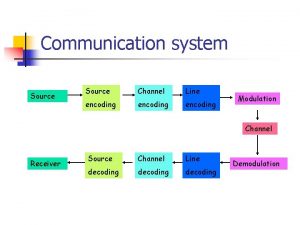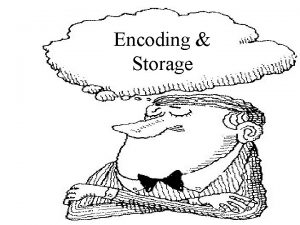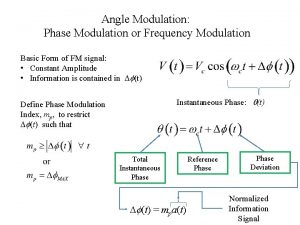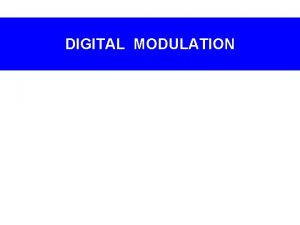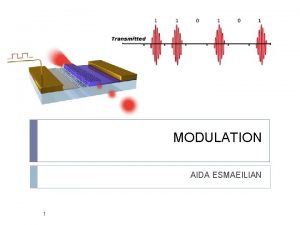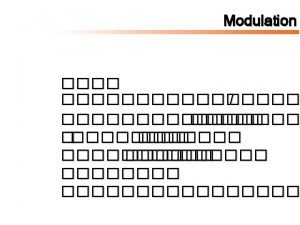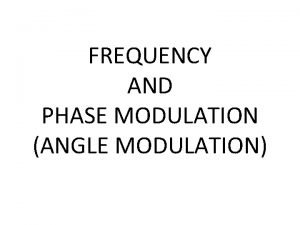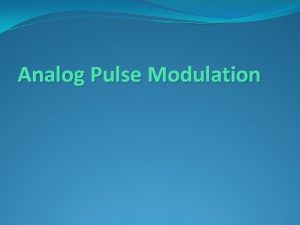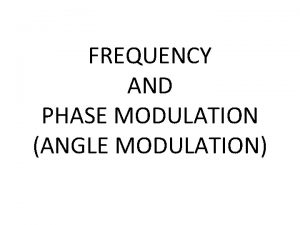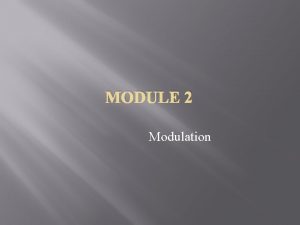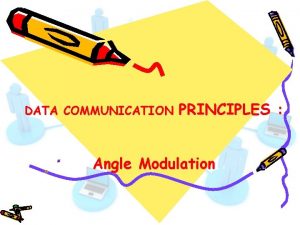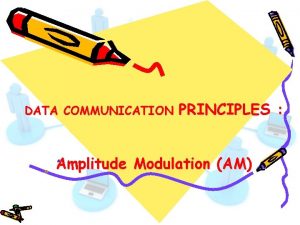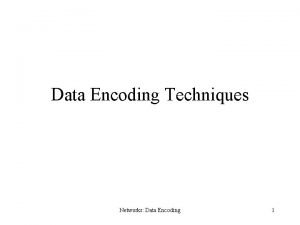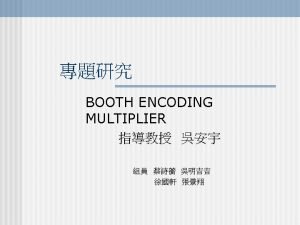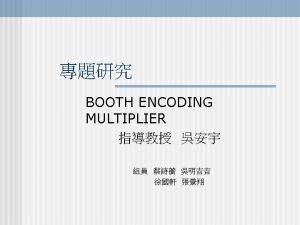Communication system Source Channel Line encoding Modulation Channel




























































- Slides: 60

Communication system Source Channel Line encoding Modulation Channel Receiver Source Channel Line decoding Demodulation

Distortion n n Amplitude distortion Phase distortion

Amplitude response of a telephone channel n Insertion loss=10 log 10 P 0/P 2 P 2=Power delivered to a load by the channel P 0=Power delivered to the same load without channel

Envelope delay and Phase response of a telephone channel n Envelope delay is the derivative of the phase shift

Tx A Channel B Equalizer C Threshold Detector D E Retiming Circuit Clock Extraction F Tx Rx Equalizer Threshold detector Data Clock (Trig ������ )

Communication system Source Channel Line encoding Modulation Channel Receiver Source Channel Line decoding Demodulation

Data transmission n Communication modes n n n Simplex Half-Duplex or Full-duplex

Transmission modes Asynchronous transmission n n Feature : unnecessary to perfectly synchronized Encoding Technique Used : NRZ Components : Start Bit (1 : transition from 1 to 0), Data (5 -8), stop bit(1, 1. 5, 2 : binary 1) Merit : Easy-to-build Demerit : High overhead e. g. start, stop bit 1 bit, data 8 bit -> overhead = 2/10 = 20 %

Transmission modes Synchronous Transmission n n n Feature : synchronized by sending timing information via separate clock line or embedding in data signal Line coding: Manchester, AMI Component : preamble (8 -bit flag), Control, Data, Control, postamble (8 -bit flag) Merit : Low overhead comparing to Asynchronous transmission. Example : preamble + control + postamble 48 bits data 1000 bits -> overhead = 48/1048 = 4. 6 % data 8000 bits -> overhead = 48/8048 = 0. 6 %

Transmission media n n n Transmission medium is the physical path between transmitter and receiver in a data transmission system. Guided vs unguided (wireless transmission) Characteristics and quality of data communication depend on characteristics of both media and signal. Key concern in design is data rate and distance.

Guided Transmission media n n Two-wire open Twisted pair Coaxial cable Fiber optic

Twisted pair


Coaxial cable & connectors




Guided transmission media Data rate Distance Typical use Two-wire open 19. 2 kbps 50 m Telephone Twisted pair Category 1 -2 <2 Mbps 2 -3 miles Telephone Twisted pair Category 3 -6 200 Mbps 100 m LANs Coaxial cable, Thin 10 Mbps Baseband Single Ch. 100 m LANs Coaxial cable, Thick 10 Mbps Broadband Multi Ch. 2 -3 miles LANs, Cable TV Fiber optic 100 miles Data, video, LANs, WANs 10 Gbps

Unguided transmission media Transport electromagnetic waves without using a physical conductor



Geostationary satellites n n The satellite must move at the same speed as the earth so that it seems to be fixed above a certain spot. Orbital speed is based on distance from the planet. This orbit occurs at the equatorial plane and is approximately 22, 000 miles from the surface of the earth. At least 3 Satellite to cover all areas.

Satellite frequency bands Band C Downlink Sat. to earth 3. 7 -4. 2 GHz Uplink Earth to Sat. 5. 925 -6. 425 GHz Ku 11. 7 -12. 2 GHz 14 -14. 5 GHz Ka 17. 7 -21 GHz 27. 5 -31 GHz

Unguided transmission media Data rate Distance Typical use Microwave n-Gbps 20 -30 miles Building to building Satellite n-Gbps Worldwide Long distance Infrared 16 Mbps 1. 5 Miles Short distance

Modulations Amplitude Shift Keying ASK (OOK)

BW for ASK Nbaud is baud rate

n Ex. Given a BW of 10, 000 Hz (1, 00011, 000) for a full-duplex ASK. Find the carriers and the BW in each direction. Assume there is no gap between the bands in two directions. What is the maximum baud rate and bit rate?

Frequency Shift Keying (FSK(

BW for FSK

n EXample: Find the maximum bit rates for an FSK signal if the bandwidth of the medium is 12, 000 Hz, and the difference between the two carriers must be at least 2000 Hz. Transmission is in full-duplex mode.

Phase Shift Keying (PSK(

PSK Constellation diagram

4 -PSK

4 -PSK Constellation diagram

8 -PSK

BW for PSK n n The same as ASK Ex. Given a bandwidth of 5000 Hz for an 8 -PSK signal, what are the baud rate and bit rate?

n PSK is not susceptible to the noise degradation that affects ASK, nor the BW limitations of FSK.

Quadrature amplitude modulation (QAM (

BW for QAM n The same as ASK and PSK.

Multiplexing n n n multiple links on 1 physical line common on long-haul, high capacity, links have FDM and TDM alternatives

Frequency Division Multiplexing

FDM System Overview

FDM Voiceband Example

Wavelength Division Multiplexing n n FDM with multiple beams of light at different freq carried over optical fiber links

Synchronous Time Division Multiplexing

TDM System Overview

Data communication interfacing DTE DCE PSTN DCE DTE n DTE : Data Terminal Equipment is any n DCE : Data Circuit-terminating Equipment is any device that transmits or device that is a source of or destination for binary digital data (PC) receives data in the form of an analog or digital signal through a network (Modem)

Data communication interfacing DTE -DCE Interfacing Requirement : Use the same encoding scheme and have common standards n n Mechanical characteristics : plugs, circuits Electrical characteristics : voltage-level, timing Functional characteristics : meaning of each interchange circuits ������ 7 ��� Ground

V. 24/EIA-232 (RS 232) Electronic Industries Association (EIA)

Mechanical characteristics n (ISO 2110) 25 -pin connector (but can be substituted by 9 -pin (DB-9) : 8, 3, 2, 20, 7, 6, 4, 5, 22)

Electrical characteristics n n n -3 to -15 V=binary 1 or OFF condition +3 to 15 V =binary 0 or ON condition Maximum bit rate 20 kbps 0 1 1

Functional specification

Control Signal Name Request to send Clear to send DCE ready DTE ready Ring indicator Received line signal detector To DCE DTE Function DTE wishes to transmit DCE is ready to receive DCE is ready to operate DTE is ready to operate DCE is receiving a ringing signal DTE DCE is receiving a signal (carrier)


Null modem

PSTN

MODEMS MOdulator/DEModulator n Bandwidth 600 Hz to 3000 Hz

Dial-up operation DTE 20


 Amplitude modulation vs frequency modulation
Amplitude modulation vs frequency modulation Amplitude modulation vs frequency modulation
Amplitude modulation vs frequency modulation Advantages of angle modulation
Advantages of angle modulation Data encoding and modulation
Data encoding and modulation Basic coding test
Basic coding test Channel length modulation
Channel length modulation Channel length modulation
Channel length modulation Source modulation in aas
Source modulation in aas Source modulation in aas
Source modulation in aas What is line encoding
What is line encoding Encoding definition in communication
Encoding definition in communication Marketing communication process
Marketing communication process Data encoding techniques
Data encoding techniques 2110004
2110004 Transient line source analyzer
Transient line source analyzer Types of multi channel retailing
Types of multi channel retailing Signal space analysis in digital communication
Signal space analysis in digital communication Determine id
Determine id Smcr in communication
Smcr in communication Source message and channel factors
Source message and channel factors Information source transmitter channel receiver destination
Information source transmitter channel receiver destination Persuasion matrix
Persuasion matrix Digital modulation advantages
Digital modulation advantages Translation techniques modulation
Translation techniques modulation Tina champagne sensory modulation
Tina champagne sensory modulation Trail edge modulation
Trail edge modulation Pulse code modulation conclusion
Pulse code modulation conclusion What is percentage modulation
What is percentage modulation Meruuu
Meruuu Modulation digital to analog
Modulation digital to analog To acquire for
To acquire for Kinematik der translationsbewegungen
Kinematik der translationsbewegungen Digital to analog modulation techniques
Digital to analog modulation techniques Cross phase modulation
Cross phase modulation Direct modulation
Direct modulation Modulation coding scheme
Modulation coding scheme Example of experience corollary
Example of experience corollary Ask modulation constellation diagram
Ask modulation constellation diagram Cross modulation
Cross modulation Constellation diagram bpsk
Constellation diagram bpsk Dscfc
Dscfc White noise in analog communication
White noise in analog communication Delta modulation conclusion
Delta modulation conclusion Probability of error
Probability of error Cross modulation
Cross modulation Formula for modulation index
Formula for modulation index Principle of amplitude modulation
Principle of amplitude modulation Sequential modulation
Sequential modulation Formula for modulation index
Formula for modulation index Formula for modulation index
Formula for modulation index Modulacion
Modulacion Severn suzuki speech modulation
Severn suzuki speech modulation Advantages of pwm
Advantages of pwm Pwmctl
Pwmctl Pulse code modulation and demodulation
Pulse code modulation and demodulation Pulse code modulation and demodulation
Pulse code modulation and demodulation Granular noise formula
Granular noise formula Rfid modulation techniques
Rfid modulation techniques What is modulation
What is modulation Ads b modulation
Ads b modulation Pulse code modulation advantages and disadvantages
Pulse code modulation advantages and disadvantages
